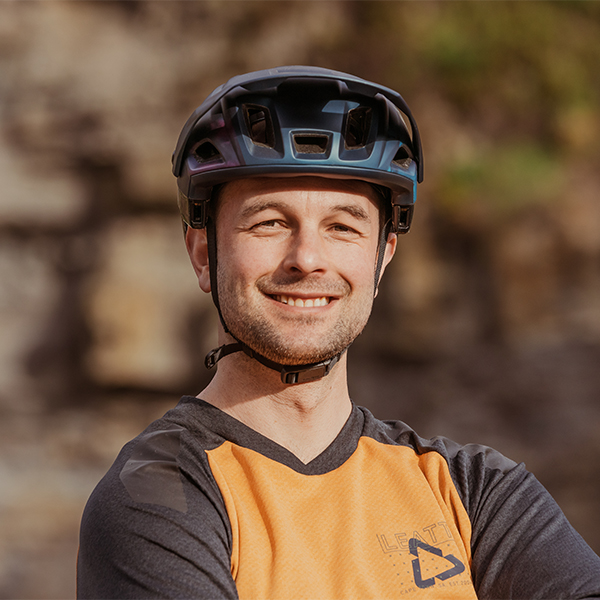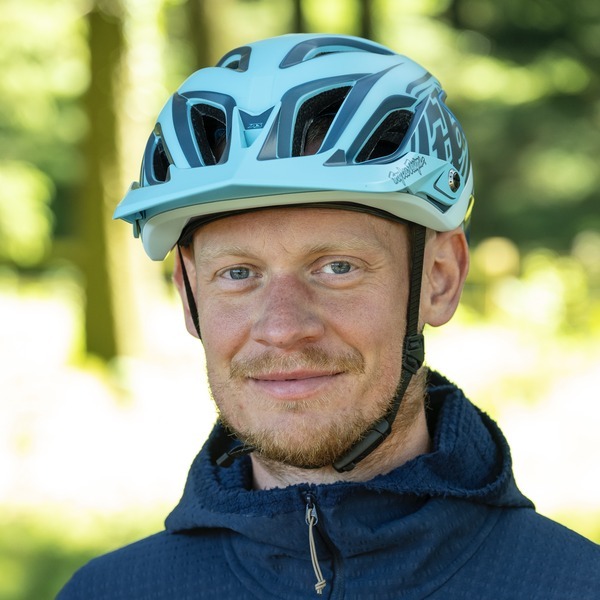A good set of mountain bike tyres can be the difference between feeling pinned and feeling petrified – the right rubber brings grip, confidence and control when you need it most.
However, choosing the perfect tyre is tough. Compounds, casings, widths, weights and construction all play a part – and that’s before you get into personal preferences and local trail conditions.
At BikeRadar, we’ve tested hundreds of tyres across every discipline, from super-efficient XC treads to heavy-duty downhill brutes. Many of our favourites feature in our comprehensive buyer’s guides – but which would we spend our own money on?
To find out, we asked our tech team to share the tyres they’d buy today.
SQUIRREL_PLAYLIST_10207850

Still not sure what to buy? Check out our full guide to the best XC, downcountry, trail and enduro mountain bike tyres we've tested.
Robin Weaver – Maxxis High Roller III 3C MaxxGrip/MaxxTerra EXO+/DD
SQUIRREL_TEXT_13265647

It might be a bit of a slow roller, but the High Roller 3 is one hell of a tyre.
The blocky tread pattern translates into predictable grip just about everywhere, with no shortage of braking or cornering traction across a multitude of surfaces.
Thanks to the triple-compound rubber, you don’t feel like Bambi on ice when firing into wet roots, and it feels easy to navigate damp rocks and hardpack trail, too.
On that note, I’m going for a MaxxGrip front tyre to keep the front end glued to the trail, and the MaxxTerra compound at the rear for a little extra rolling speed.
I’m a big fan of the Maxxis casings. Unlike some brands, Maxxis' naming conventions are easy enough to decipher, and in practice, they do what’s promised.
While I’d happily take the lighter EXO+ casing on the front, the heavier DoubleDown casing out back should help stave off punctures and enable me to ride with a little more peace of mind.
- Read more: Maxxis High Roller III review
SQUIRREL_13265647
Will Soffe – Specialized Butcher T9 Soil Searching
SQUIRREL_TEXT_13265651

The Butcher is a good option if you're on a tighter budget.
The Butcher is a great budget alternative to Maxxis Minions. I tried Butchers when they were first released in the early 2010s and never looked back. They’re affordable, have an effective tread pattern and are offered with sensible casing options.
The tread pattern is a jack of all trades, spanning mid-level conditions perfectly and coping admirably in dust or mud, rolling fast and braking tenaciously.
Specialized’s Grid Trail casing isn’t up to gnarly rocks on eMTBs or downhill bikes, but for trail riding, they hold up well.
Add pressure for bike-park laps and you'll benefit from the lighter carcass when accelerating, braking or turning. They weigh just over 1kg each.
This attractive tanwall version would be my go-to if I were to shell out on some new tyres.
Their sale supports Specialized’s Soil Searching initiative – a movement to recognise, celebrate and support trail builders. Money from each endorsed product helps fund building and maintenance of trails.
SQUIRREL_13265651
Alex Evans – Specialized Hillbilly T9 GRID Gravity
SQUIRREL_TEXT_13265655

Like Will, I’m also a fan of Specialized’s tyres, but for more reasons than just the price.
Yes, £50 RRP for a gravity-ready tyre is hard to ignore when most of the competition is £70 plus, but there’s more to it than that.
The kind of grip the Hillbilly's blocky, aggressive tread gives you is on a par with Rob’s choice, the High Roller III.
The cut-spike design of these two tyres provides the predictable cornering traction we’ve all been pining for, and those sharp, vertical braking ramps help when you want to slow down in a hurry.
But their performance isn’t limited to gloopy mud – the soft, squidgy compound adheres to greasy hardpack as well as it does to slick roots and rocks. To boot, the blocky tread is great when it’s dry, digging into dust and broken-up ground.
The GRID Gravity casing is more than up to the task of heavy enduro or light DH without so much as wincing. All this performance begs the question – why pay more if you don’t have to?
SQUIRREL_13265655
Tom Marvin – Schwalbe Albert Radial Evo Trail/Gravity
SQUIRREL_TEXT_13265656

You can’t have a discussion about tyres in the office without people extolling the virtues of getting the best option you can afford.
As such, were I building up a bike, I’d forgo fancy gears and flashy finishing kit (other than a OneUp carbon bar) in order to get the rubber I really wanted.
Schwalbe’s radial-cased tyres are as good as the hype suggests, with a price tag to match.
While waiting for the mud to return before I sling on the aggressive pair of Magic Marys I have, I've been rolling around on more solid dirt on a pairing of the Albert Trail Pro Ultra Soft and Albert Gravity Pro Soft, front and rear, respectively.
- Read more: Schwalbe Magic Mary Radial
The tyres have a wonderful feel on the trail – soft and supple, almost as if you've removed a couple of clicks of compression damping.
They're brilliantly smooth over trail imperfections, boosting grip and adding confidence.
The Albert is more of a trail tyre than the Mary. However, even on steep technical terrain, I've found it more than capable, with the radial casing working well with the Ultra Soft rubber compound to give ample traction when it's needed.
There are downsides, though. They roll slower than non-radial tyres, so feel sluggish especially on tarmac – perhaps sticking with a 'traditional' tyre on the rear wouldn't be a mistake.
They're also quite pressure-dependent – their optimal range is narrow, so experiment to get it right. I suggest starting with 3psi more than usual.
And, they're not cheap, especially compared to the Spesh rubber my colleagues Will and Alex picked.
The Soft rubber on my rear tyre has done around 18,000 metres of descending, and is decidedly tired already. They're not great value for money.
But, if you want top-tier tyres, I'd be looking to Schwalbe's Radial range and picking the tread and casing to suit your needs.
SQUIRREL_13265656






